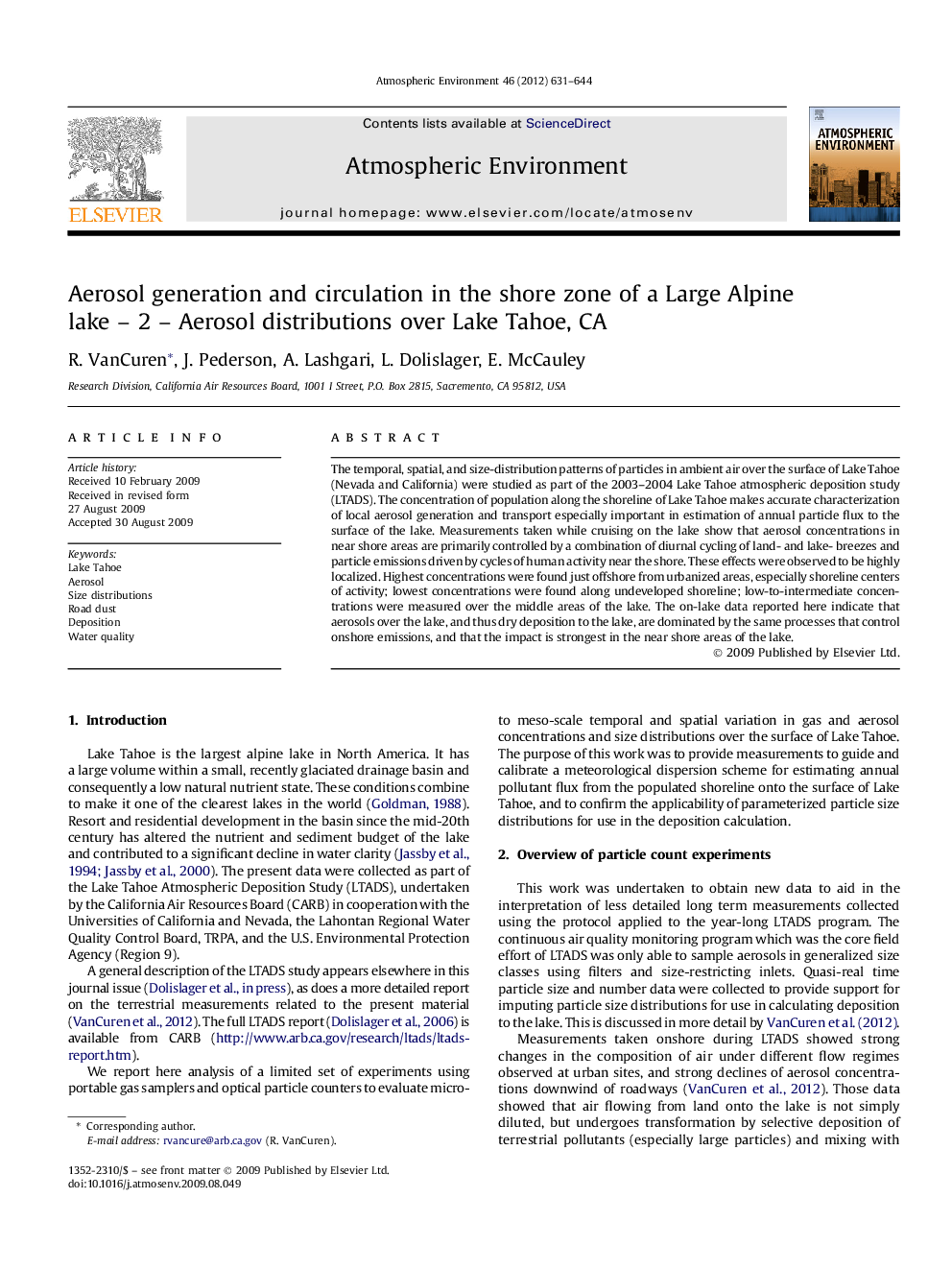| Article ID | Journal | Published Year | Pages | File Type |
|---|---|---|---|---|
| 4439296 | Atmospheric Environment | 2012 | 14 Pages |
The temporal, spatial, and size-distribution patterns of particles in ambient air over the surface of Lake Tahoe (Nevada and California) were studied as part of the 2003–2004 Lake Tahoe atmospheric deposition study (LTADS). The concentration of population along the shoreline of Lake Tahoe makes accurate characterization of local aerosol generation and transport especially important in estimation of annual particle flux to the surface of the lake. Measurements taken while cruising on the lake show that aerosol concentrations in near shore areas are primarily controlled by a combination of diurnal cycling of land- and lake- breezes and particle emissions driven by cycles of human activity near the shore. These effects were observed to be highly localized. Highest concentrations were found just offshore from urbanized areas, especially shoreline centers of activity; lowest concentrations were found along undeveloped shoreline; low-to-intermediate concentrations were measured over the middle areas of the lake. The on-lake data reported here indicate that aerosols over the lake, and thus dry deposition to the lake, are dominated by the same processes that control onshore emissions, and that the impact is strongest in the near shore areas of the lake.
